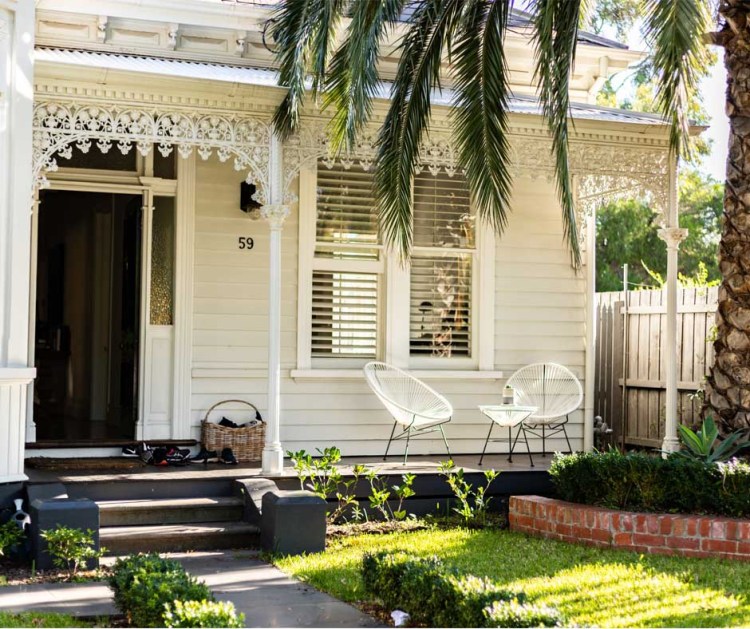Which two capital cities might have just hit their property price peak?
By Webmaster | 03 Mar 2022
It’s a three-speed property market across the country right now, with two capital cities showing signs prices might’ve peaked, three cities looking like they could soon peak, and three still going strong. How is the market performing in your neck of the woods?
While national housing prices have increased a staggering 20.6% over the past 12 months, every capital city and broad ‘rest-of-state’ region is now recording a slowing trend in value growth, according to the latest CoreLogic figures.
However, some areas are faring better than others, as we’ll run you through below.
Possibly peaked: Sydney and Melbourne
Sydney and Melbourne showed the sharpest slowdown in February, with Sydney (-0.1%) posting its first decline in housing values in 17 months (since September 2020), while Melbourne housing values (0.0%) were unchanged over the month.
That’s a pretty big drop off for Sydney in particular, which recorded 0.6% growth in January, while Melbourne recorded 0.2%.
A major contributing factor to this slowdown is that there’s now more property stock for buyers to choose from.
In Melbourne, advertised stock levels are now above average and tracking 5.5% higher than a year ago, while in Sydney advertised stock is 6.3% higher than last year.
CoreLogic’s director of research Tim Lawless says more choice translates to less urgency for buyers and some empowerment at the negotiation table.
“The cities where housing values are rising more rapidly continue to show a clear lack of available properties to purchase,” Mr Lawless explains.
Potentially peaking soon: Perth, Canberra and Darwin
The three capital cities that showed signs of slowing down in February – but not yet peaking – are Perth (0.3%), Canberra (0.4%) and Darwin (0.4%).
To put those figures into context, in January Perth (0.6%), Canberra (1.7%) and Darwin (0.5%) all recorded higher housing growth figures.
And over the past 12 months, Perth (8.3%), Canberra (23.8%) and Darwin (12.3%) have all performed quite strongly.
Still going strong: regional areas, Brisbane, Adelaide and Hobart
Conditions are easing less noticeably across Brisbane (1.8%), Adelaide (1.5%) and Hobart (1.2%).
Similarly, regional markets have been somewhat insulated from slowing growth conditions, with five of the six rest-of-state regions continuing to record monthly gains in excess of 1.2%.
The stronger housing market conditions in Brisbane and Adelaide in particular can be seen in the quarterly growth figures, with Brisbane housing values rising 7.2% over the past three months, and Adelaide up 6.4% over the same period.
So while Brisbane and Adelaide have slowed down a touch, a shortage of listings in those markets is helping to keep pushing prices up.
“Total listings across Brisbane and Adelaide remain more than 20% lower than a year ago and more than 40% below the previous five-year average,” explains Mr Lawless.
“Similarly, the combined rest-of-state markets continue to see low advertised supply, 24.9% below last year and almost 45% below the five-year average.”
Need help to finance your 2022 home purchase?
With property prices slowing down around the nation, now’s a good time to take stock and work out what you can and can’t afford over the year ahead – be that buying your first home or adding to your investment portfolio.
And part of that process is finding out your borrowing capacity before you start house hunting, so you don’t stretch yourself beyond your limits.
So if you’d like to find out what you can borrow – and therefore afford to buy – get in touch today.
We’d love to sit down with you and help you map out a plan for your 2022 finance and property goals.
Disclaimer: The content of this article is general in nature and is presented for informative purposes. It is not intended to constitute tax or financial advice, whether general or personal nor is it intended to imply any recommendation or opinion about a financial product. It does not take into consideration your personal situation and may not be relevant to circumstances. Before taking any action, consider your own particular circumstances and seek professional advice. This content is protected by copyright laws and various other intellectual property laws. It is not to be modified, reproduced or republished without prior written consent.
Categories
Free Consultation
Book Your FREEConsulation
 AAA Mortgage Solutions Australian Credit Licence Number: 385791 © 2020 All Rights Reserved.
Terms of Use.
Privacy Policy.
Internal Dispute Resolution Process.
Site Map.
AAA Mortgage Solutions Australian Credit Licence Number: 385791 © 2020 All Rights Reserved.
Terms of Use.
Privacy Policy.
Internal Dispute Resolution Process.
Site Map.




